The Pajero Sport is not a variant of the Pajero, it’s a different model. This model sits in between the boxy Pajero we have all come to know of and the smaller Outlander. But it does not sit in the middle, it’s more of a funky young and hip version of what the normal Pajero is, with its streamlined looks. This model is Spec’d with a smaller engine when compared to the normal Pajero and the price difference between the Pajero and Pajero Sport is just short of 30k. Right, now that we have cleared up that confusion, we can move on with the review.
Note for Mitsubishi, might have been worth going with a different name for this model …… just saying.
The Range
There are two models in New Zealand, the XLS (tested) at $61,990 and the VRX at $66,990. Both have the same engine, a 2.4L DID MIVEC intercooled turbo-diesel which creates 134kw@3500 rpm and 437Nm@2500 rpm, and it’s factory rated with a fuel consumption rating of 8.0L per 100km.
The XLS is the base model with 7 seats, 3rd row curtain airbags, Smart Audio, reverse camera, cruise control and adjustable speed limiters, Hill Descent Control, keyless entry, push button start, and 7” touch screen smart phone link display that has Apple CarPlay and Android Auto. Not a bad lineup of specs for a base model.
The VRX has all of the above plus, leather interior with heated and power adjustable front seats, Forward Collision Mitigation, Blind Spot Warning, Multi Around View Monitor, Ultrasonic Miss-acceleration Mitigation System, Rain Sensing Wipers, Dusk Sensing Headlights, Dual Zone Climate Control and an 8 speaker sound system. Both models are available in six colours, Licorice (black), Sterling Silver, Cardona (white), Redwood, Deep Bronze and Titanium.
Worth noting is that these models are currently available on a special promotional price from Mitsubishi of $49,990 for the XLS and $61,990 for the VRX.
First Impressions
This is a big unit, really big and wide! Standing at just over 1.8m tall, 1.8 wide and just under 4.8m long, the XLS is huge. This is made even more apparent by the big wheels and the massive clearance that they have in the arches, and I liked it. If you think in your mind of what a Pajero looks like, it’s not this – apart from the wheels, which could be from the older model.
The Pajero Sport has a modern design, with aggressive lines and angles all over the front and back. It had a very manly, outdoor rugged feel to it, like it was built strong and tough to tackle anything. I know that’s kind of sad, as a large amount will be used for school pick-ups and drop-offs, but hey I think it looks great and if I feel tough and rugged in it, that’s a thumbs up to the designers from me.
The Inside
I am a tall guy at 6’7”, and I don’t exactly know what it is, but there is something nice about climbing into a big vehicle. Maybe it’s a kid thing, or a big kid thing. The one thing I did know is that after jumping in, I had this safe and well-protected sensation. This thing is huge, and there felt like there was a lot of vehicle between you and the outside world, and this is a good thing to feel. Another thing worth knowing is its 5-star ANCAP rating.
Once in, you notice it’s a cave inside, so much room. And there was good room in the front and second row of seats, and a reasonable amount in the third row for kids. The interior, much like the exterior, is very modern and clean. A mixture of black hard and soft touch plastic, highlighted with several metal finish pillars sweeping across the cabin. I am normally someone who would go with the leather seats as an option, but I found the cloth seats to be instantly comfortable. Couple of adjustments to get the right distance from the wheel but the seat itself had good base and side supports. The second row of seats were good too, very similar to the front without as much side support, and the third row was a little less again, so it can be folded away.
Back up the front, it’s pretty minimal in terms of buttons and things. There was one knob below the gear stick for the 4wd modes, and an electric handbrake button. The steering wheel has a couple of buttons; normal expectations here with volume and cruise control. The gauges behind the steering wheel followed with this simple philosophy. Just what you need, rev counter and speedo, and a bit of additional info in the LCD screen in the centre.
The centre of the dash is fitted with what can only be described as a large iPhone on its side, which I thought was great. It worked really well, as there was no moment of ‘how do I use this’; it was just like using my phone with all its apps. This also changed once you connect your iPhone or Android phone via usb cable, which would enable Apple CarPlay or Android Auto.
Overall the cabin was well laid out, nice and tidy, and just what you need, not a lot of additional would-never-use buttons. The one feature which I did think was a bit odd and old looking, was the seat belt indicator, which was a top down outline of the vehicle with led lights indicating the offending seats without belts on.
I don’t have an iPhone, but I did have a Nexus from Google, so I got to test Android Auto. Just like every other car I had tested it with, it was a breeze. I still don’t like the fact you need to connect via USB cable for both platforms, but I guess that’s a larger safety issue. For those who have not yet had a chance to test this system or read any of the previous reviews with it.
The system is pretty simple, across the bottom you get 5 selections. Directions, Phone, Home, Audio, Apps. Once you press the directions button you get access to Google maps, and this is used just like you would on your phone. Phone, lets you see your contact list and of course call someone. ‘Home’ brings you back to the home screen, that’s much like the locked screen on an Android phone with pop-up boxes telling you if you have emails or SMS messages. Audio allows you to play what MP3’s you have on your phone through the vehicle’s audio system and last but not least apps, which is a small list of apps you can use via your phone with the vehicle’s media system. The great thing about these systems is that you also get to use Siri if you have a iPhone or Google Assistant with Android.
The boot was one of the disappointing aspects of the vehicle. If the third row is down, then it’s okay – you have good SUV sized boot of 673 litres. But if you need that third row, this gets reduced to 131 litres, of not hugely useable space. When both the third and second row are down – which was super easy to do, thanks to some easy access pull cords – the boot becomes a massive 1488-litre cave. Overall it’s good, but like we see on so many SUV’s now, if you need the use of the seven seats, you will need a roof box too for any sort of family trips, as there is no space for luggage anywhere else.
The Drive
The Pajero XLS was a rather undramatic vehicle to drive, but I mean this in a good way. It’s not difficult, or hard or uncomfortable to drive at all. If anything you feel as confident driving this as you do a hatchback. Great all round visability, big mirrors, and a nice solid platform, so you don’t end up wallowing all over the place like you’re driving a boat. On the motorway it was pretty quiet too, even with all-terrain tyres on. It’s by no means silent, but it’s also not as loud as I would have expected after driving similar vehicles.
I took the Pajero down the normal set of test roads I use, which has a mixture of open road motorway, city, and back roads for the twisty stuff. In the city there were no issues, maybe some of this is due to that fact I drive big wagon on a daily basis and am used to larger vehicle. However as the wheels were so close to the front, it made navigating in and out of parks very easy.
The twisty stuff is where I expected this car to flop. My bench mark would be the Isuzu MU-X, as it’s really good on the road and can be driving almost like a car on some country roads. After completing my stretch, I have pleasantly surprised that the Pajero stood up next to the MU-X, delivering a similar display of characteristic. As the suspension was stiffer, much like the Isuzu, the lean around corner was reduced, so you could almost drive it like a car, and not a bus. This had sealed the deal the deal for me. However there was still one concern left: how would it go offroad.
I will be honest here, we did not do an extreme test with the Pajero. But anywhere where we took it was a doddle. The ground clearance is 218mm, combined with a 30 degree approach and 24 degree departure angle, you can’t help but feel confident pottering around or mud rocks and all sorts of terrain. It also has a wading depth of 700mm, which would cover you in some beach and stream situations. Much like the driving on road, the off road was handled with little drama at all.
The last thing to note about the XLS, is its towing capacity. My model did not come with a tow bar, but you can have have this optioned, giving you a 750kg unbraked and 3100 kg braked towing capability.
What it’s up against
There are a lot of SUV’s available in the NZ market these days, but it’s safe to say that a lot of these are soft roaders, which are just larger vehicles without any actual off road capability. So when you take that into account, the list of competitors becomes a bit smaller.
Larger Diesel Lifestyle SUV’s ( * Promotional prices)
| Brand / Model | Engine | Power | Fuel L/100km | Boot Capacity | Price Highest to Lowest |
| Ford Everest Trend | 3.2 L Turbo Diesel | 143kw / 470Nm | 8.5L / 100km | 450 to 2010 Litres | $75,990 |
| Isuzu MU-X | 3.0 L Turbo Diesel | 130kw / 380Nm | 8.3L / 100km | 235 to 1830 Litres | $65,990 |
| Toyota Fortuner GX | 2.8L Turbo Diesel | 130kw / 420nm | 7.8L / 100km | 200 to 11000 Litres | $62,990 |
| Mitsubishi Pajero Sport XLS | 2.4L Turbo Diesel | 135kw / 437Nm | 8.0L / 100km | 131-1488 Litres | $61,990 |
| Holden Trailblazer | 2.8L Duramax 2 Diesel | 147kw / 500nm | 9.4L / 100km | 235 to 1830 Litres | $58,990 |
| Mitsubishi Pajero Sport XLS | 2.4L Turbo Diesel | 135kw / 437Nm | 8.0L / 100km | 131-1488 Litres | *$49,990* |
| Pros | Cons |
|
|
What do we think?
The Pajero is a bit of a forgotten horse in my books; it’s not the car everyone dreams of driving, but if you have one, you’re not going to be disappointed with it.
It seems to be able to do it all, on the road and off it. Although there is still the slight issue with the boot space with the third row up, I couldn’t fault this truck.
Unless you’re set on something flash like a Range Rover, you’re not going to find a more versatile vehicle, better value and has this array of standard equipment – even more so with the special promo deal they are currently running.
Rating – Chevron rating 5 out of 5
2017 Mitsubishi Pajero Sport XLS
| Vehicle Type | 4WD Lifestyle SUV 7 Seater |
| Starting Price | $61,990 NZD Special Promo Price of $49,990 |
| Tested Price | $61,990 NZD |
| Engine | 2.4L V6 turbo diesel |
| Transmission | 8 Speed Automatic Transmission with Sports Mode & Intelligent Shift Control |
| Kerb Weight | 2085 kg |
| Length x Width x Height | 4785 x 1815 x 1805 mm |
| Cargo Capacity | 131-1488 Litres |
| Fuel Tank (range extender) | 68 litres |
| Fuel Efficiency | Advertised Spec – Combined – 8.0 L / 100km
Real World Test – Combined – 11.0 L / 100km |
| ANCAP Safety Ratings | 5 Star Ancap Rating |


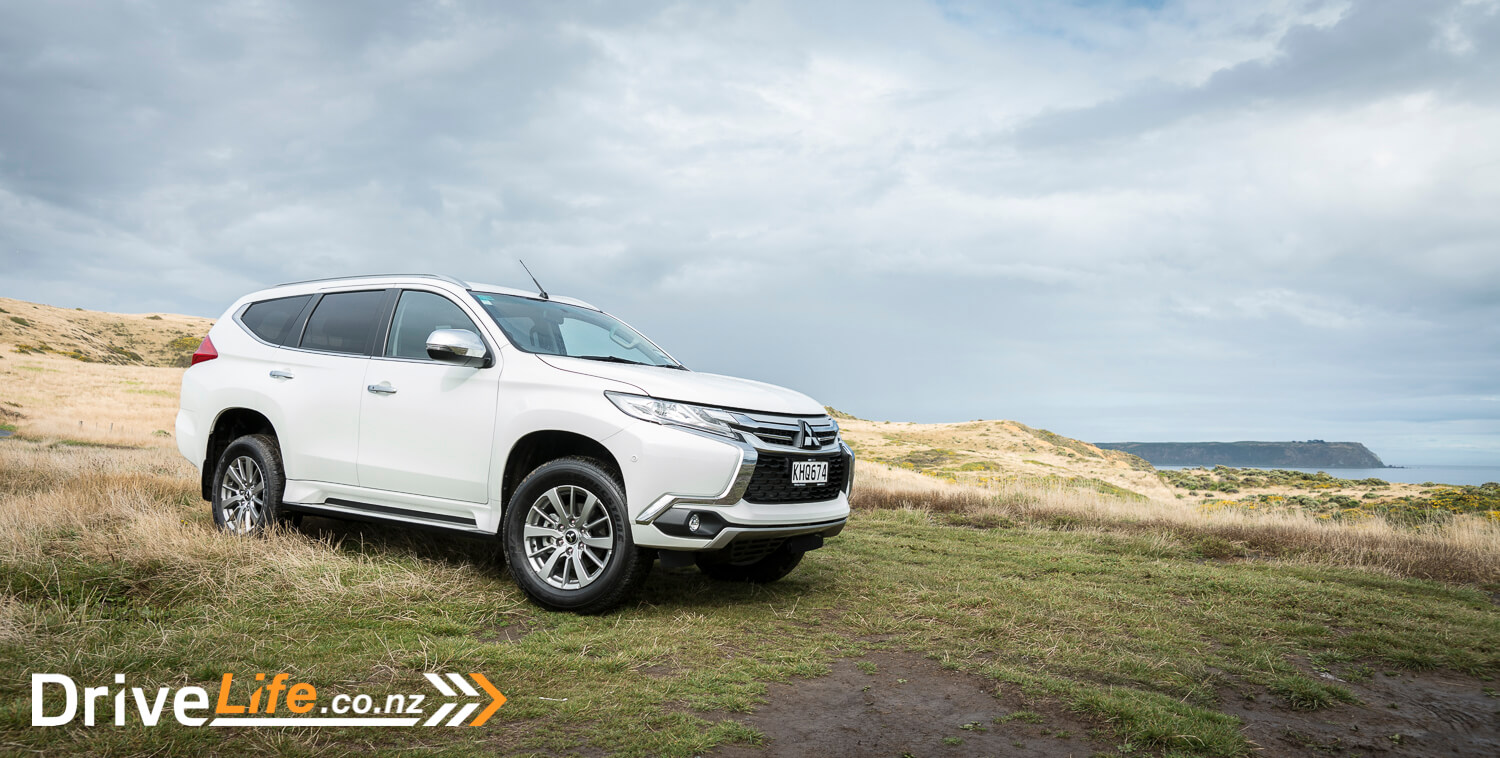
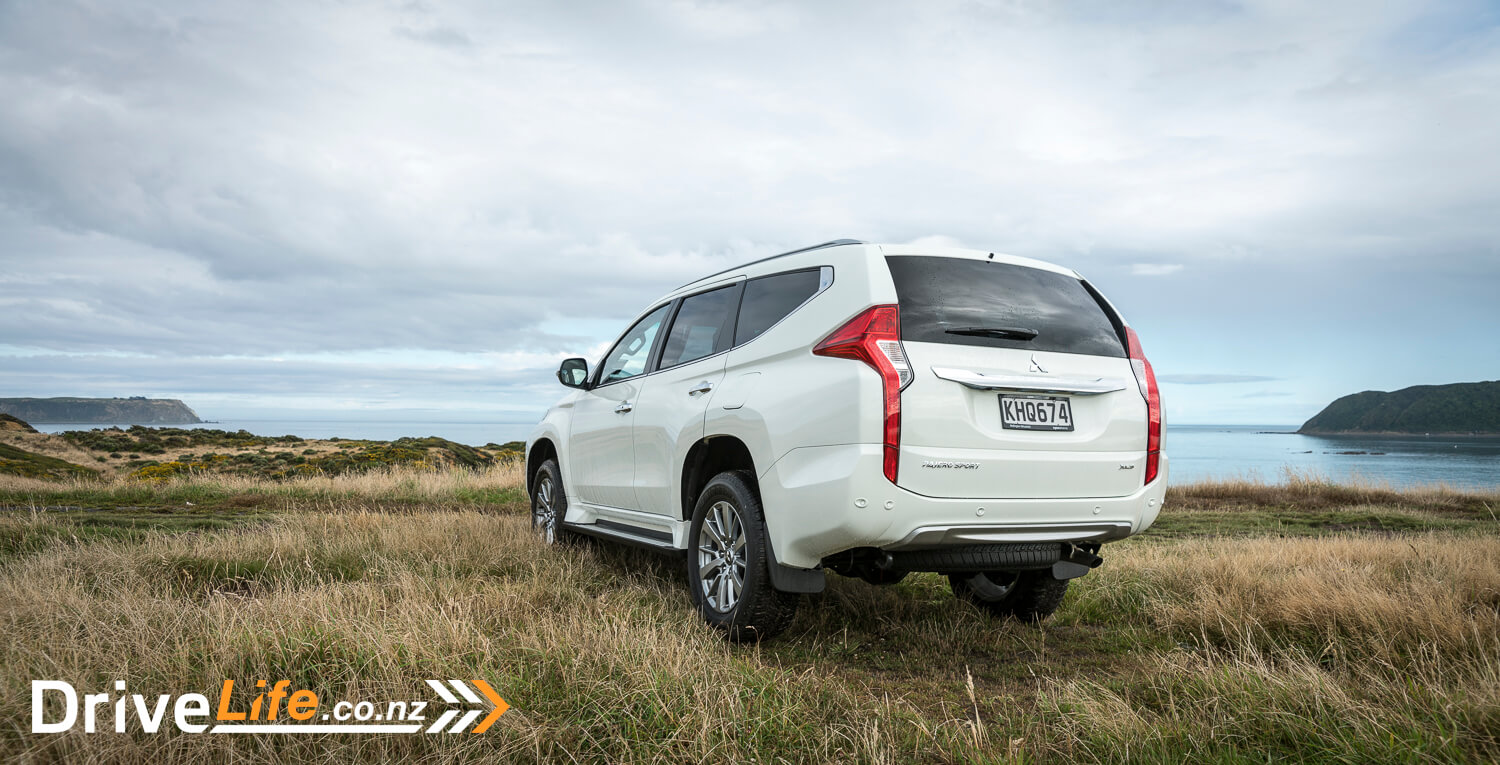
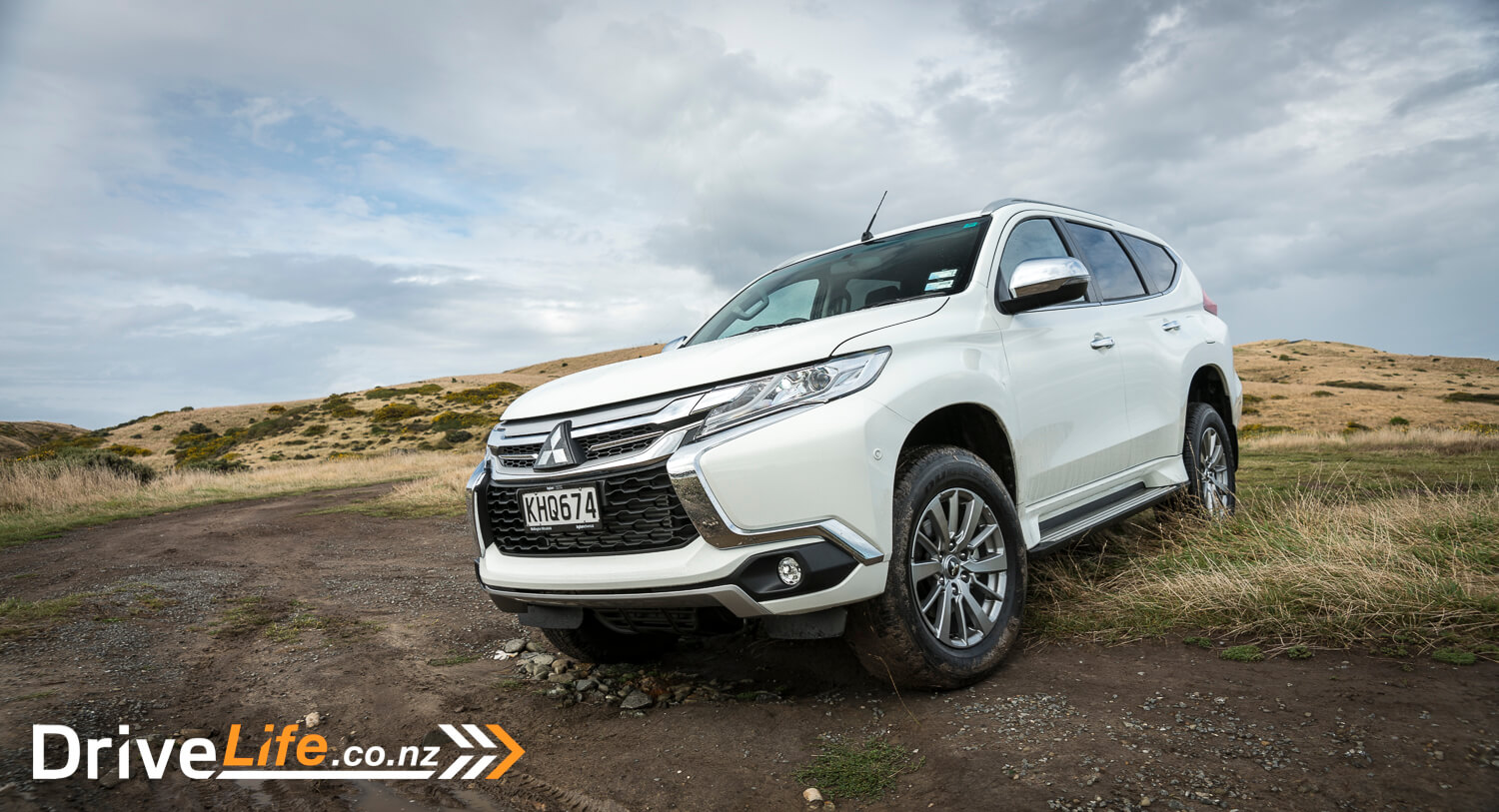
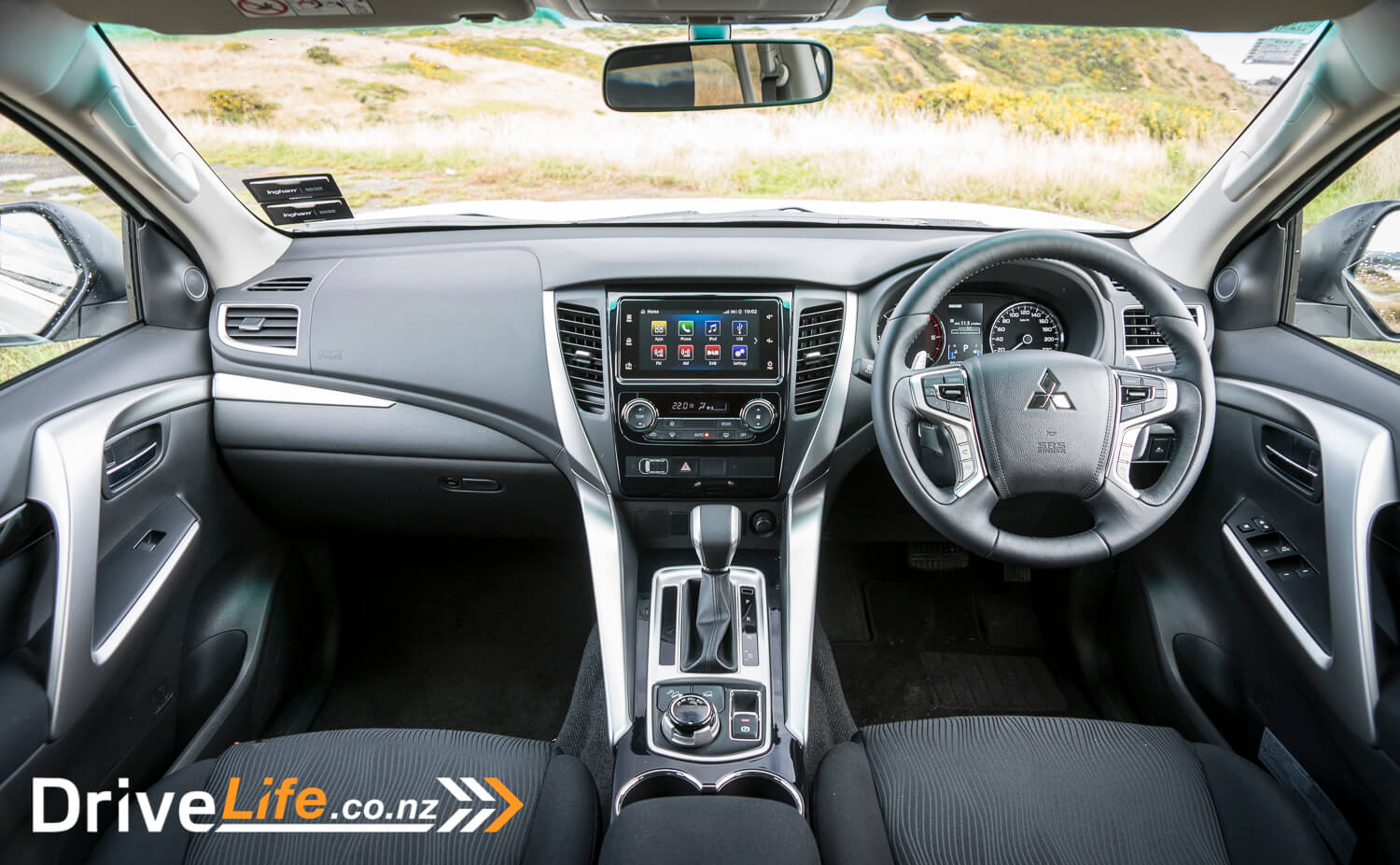
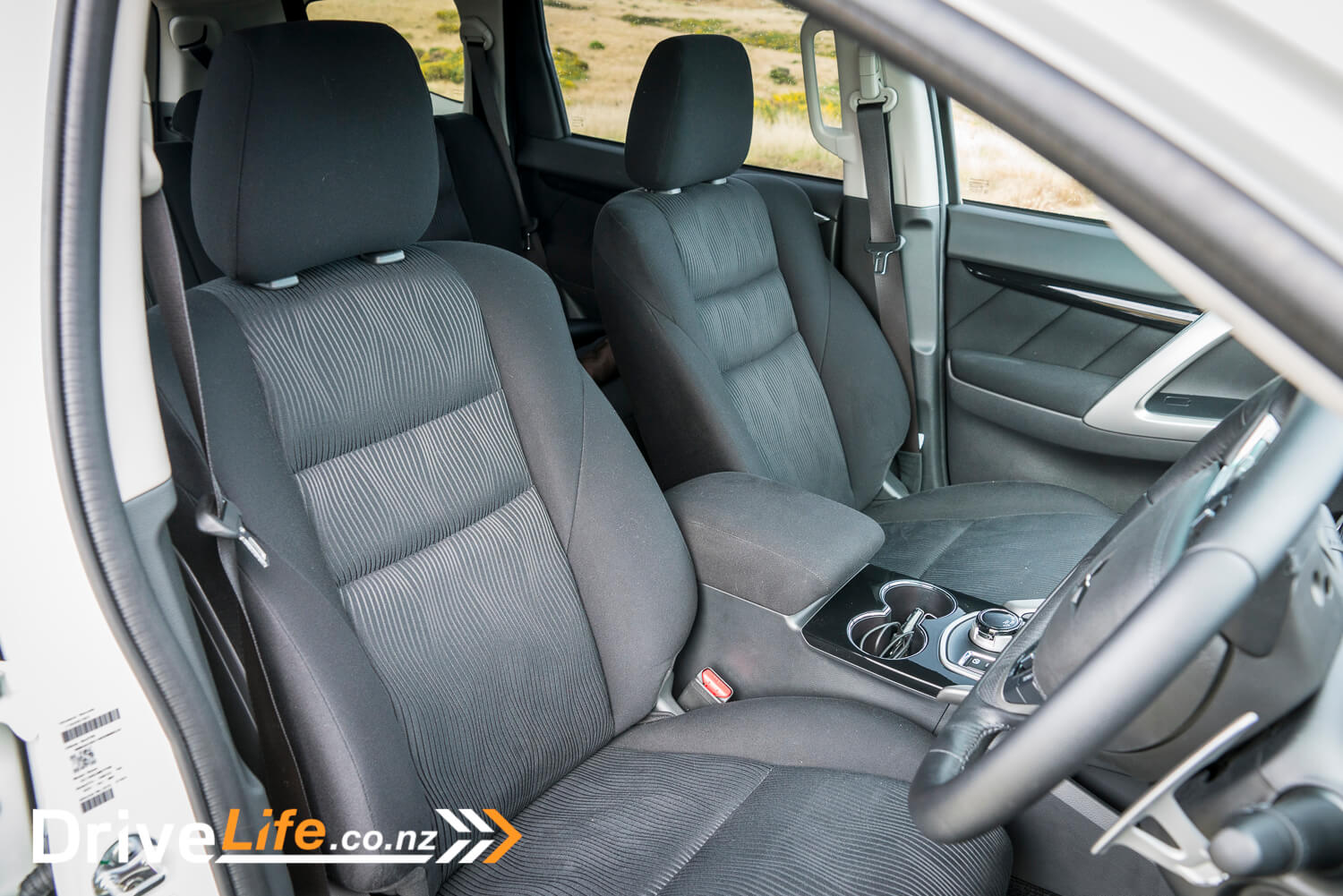
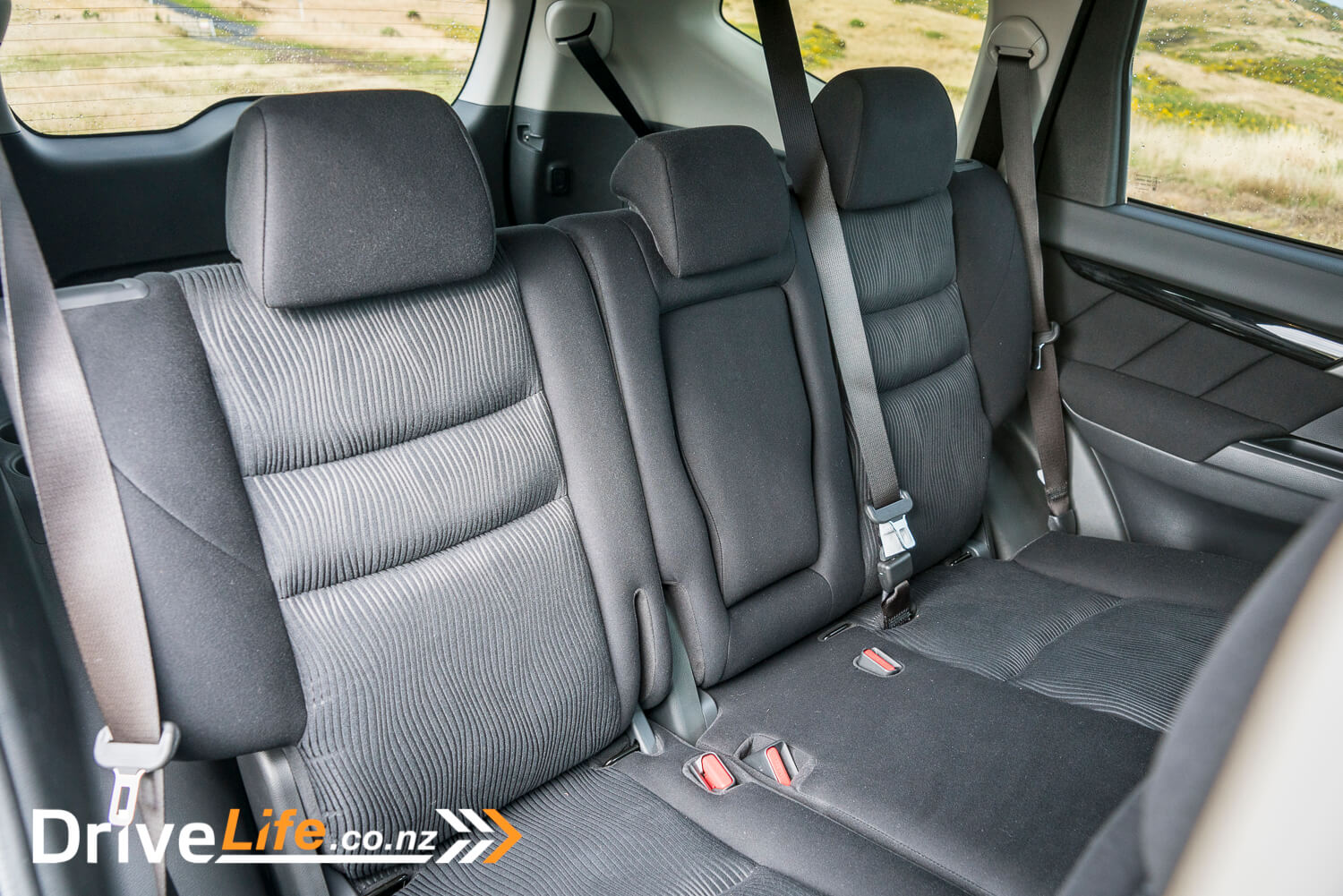
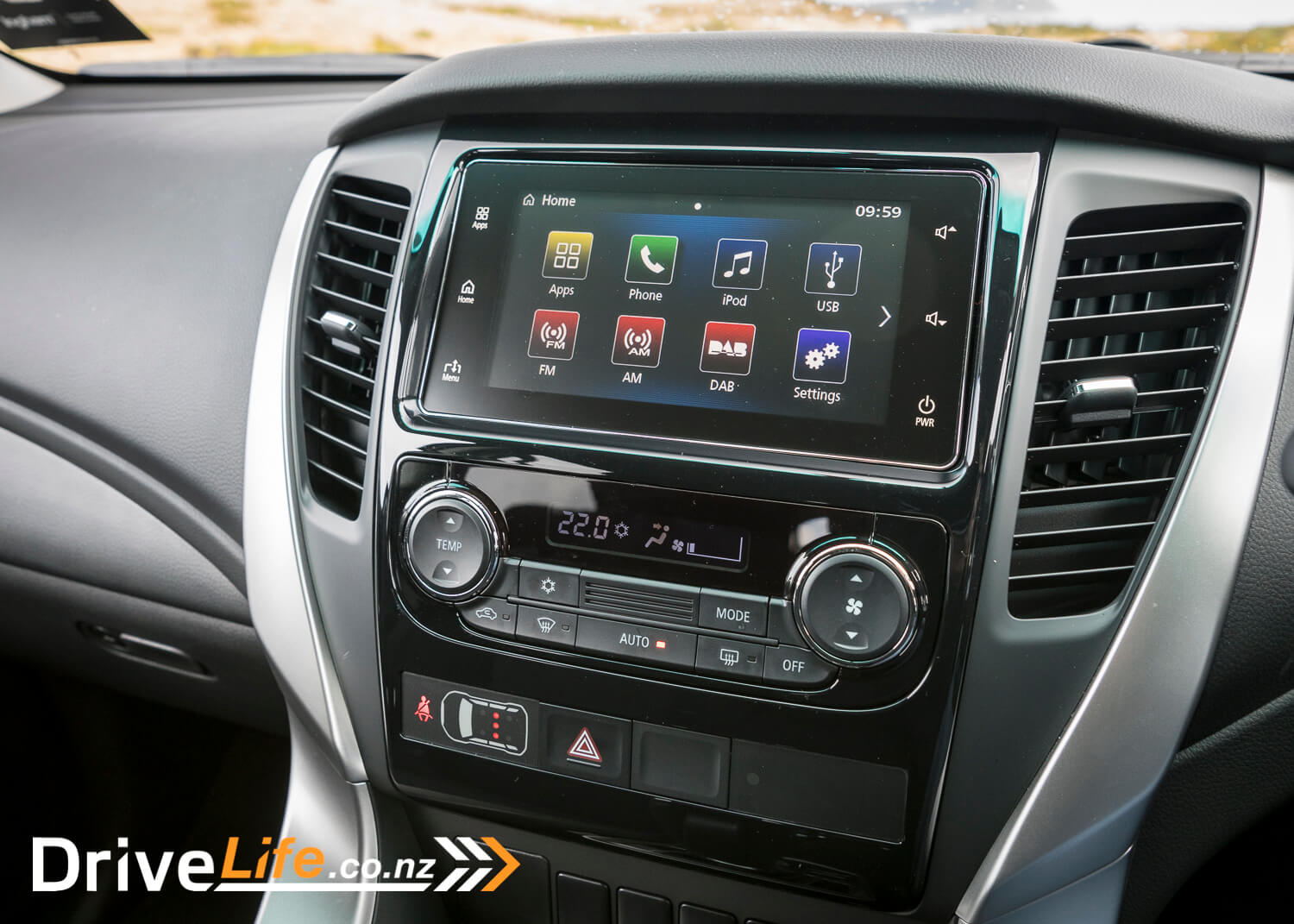
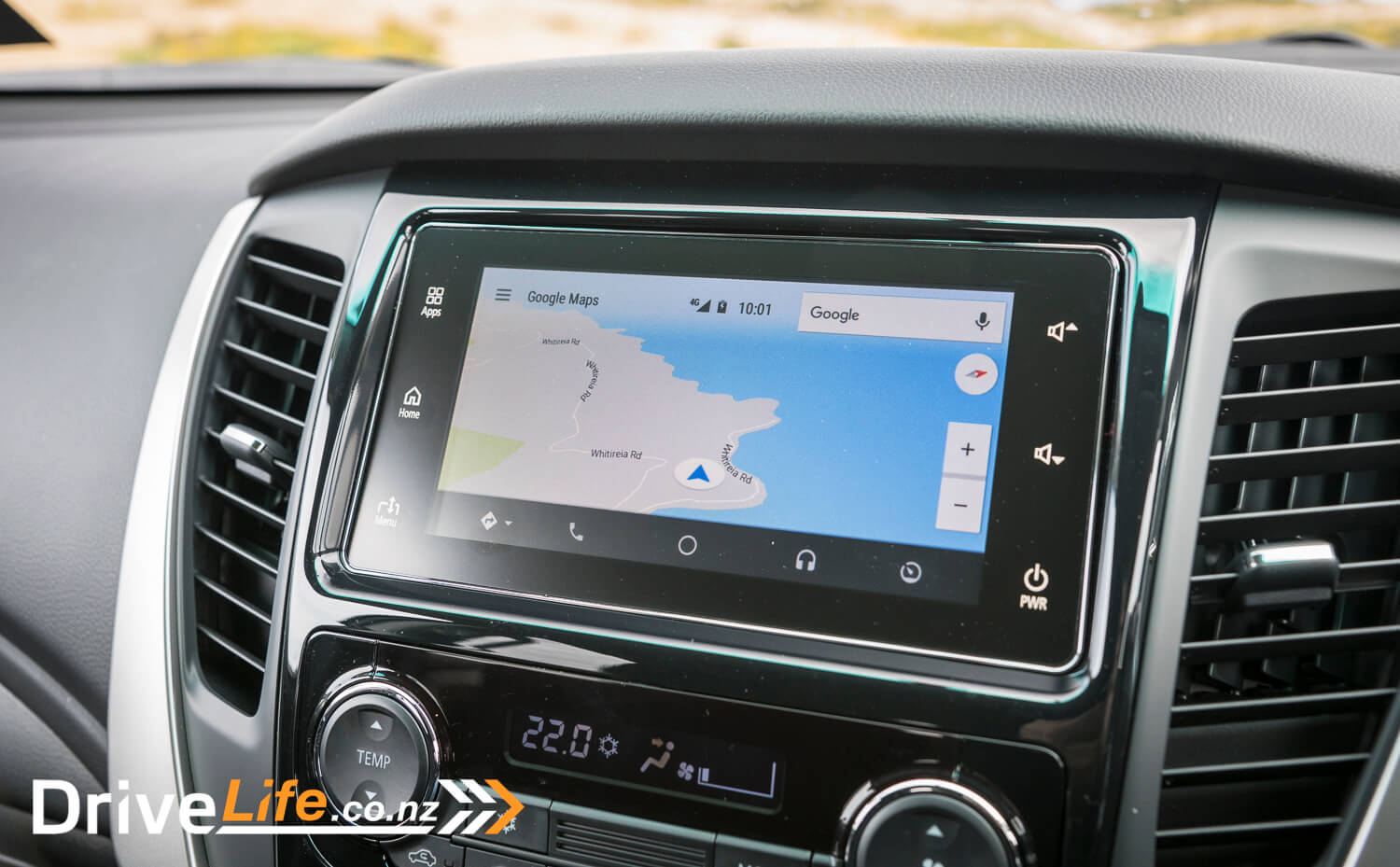
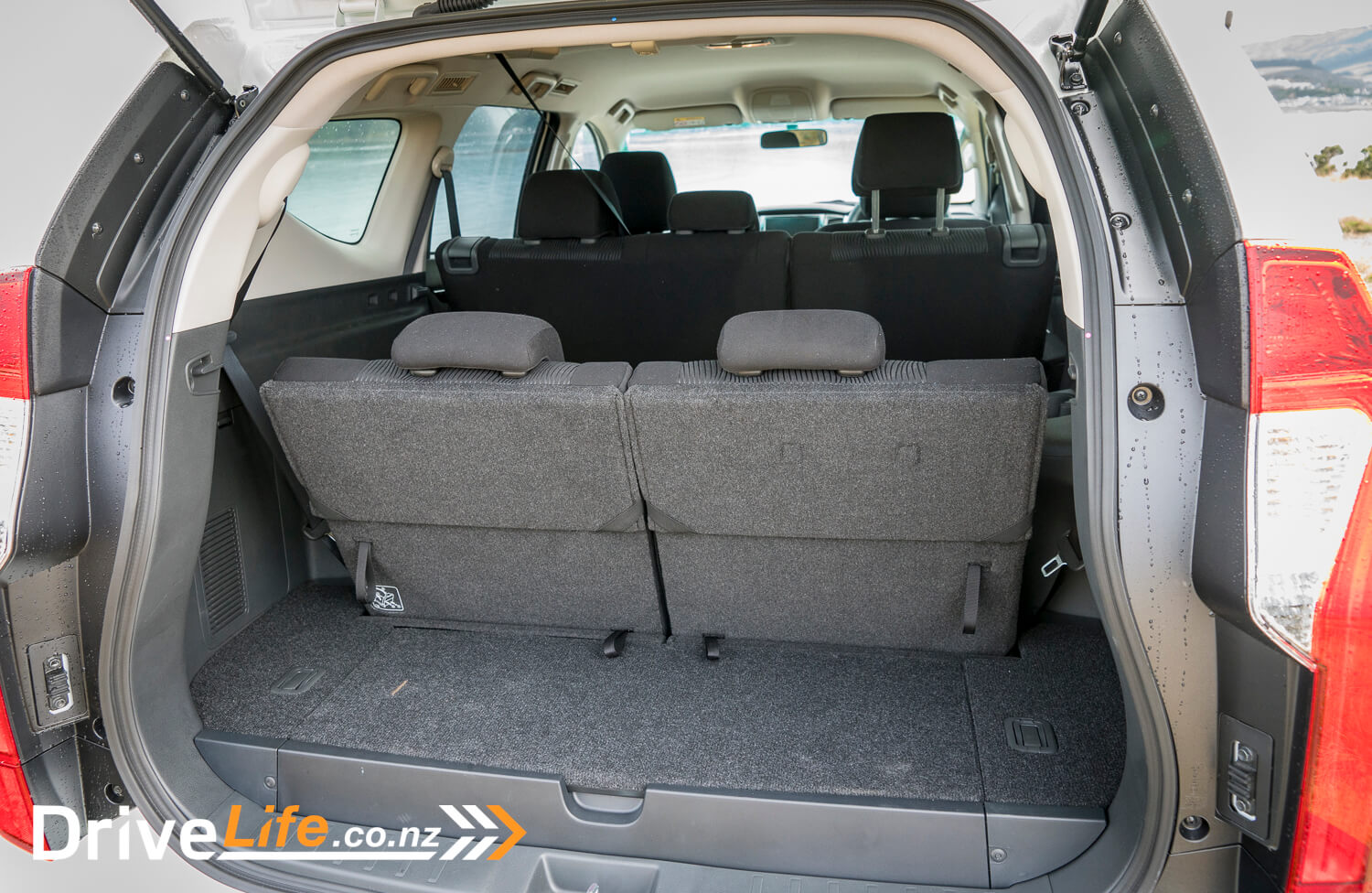
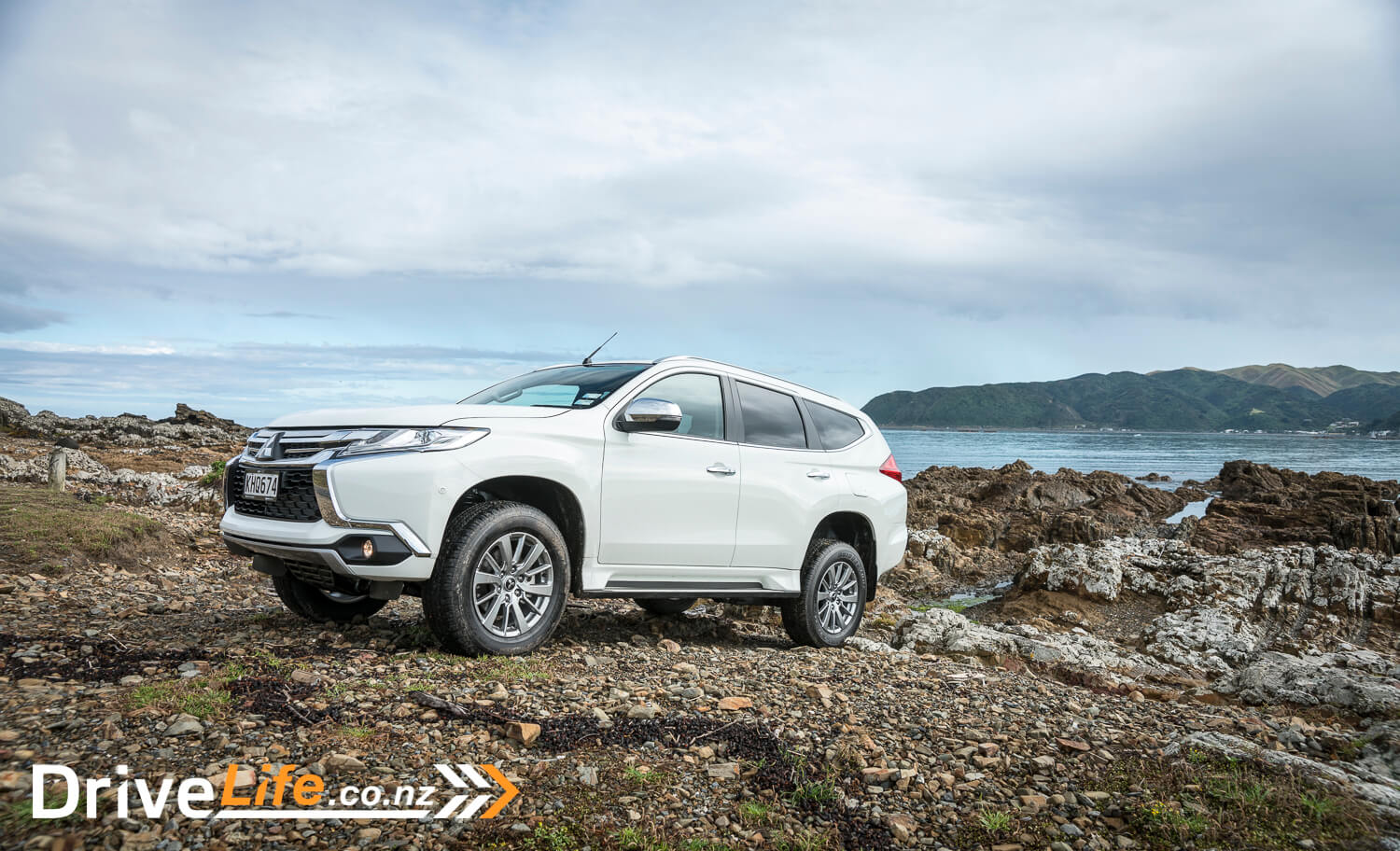
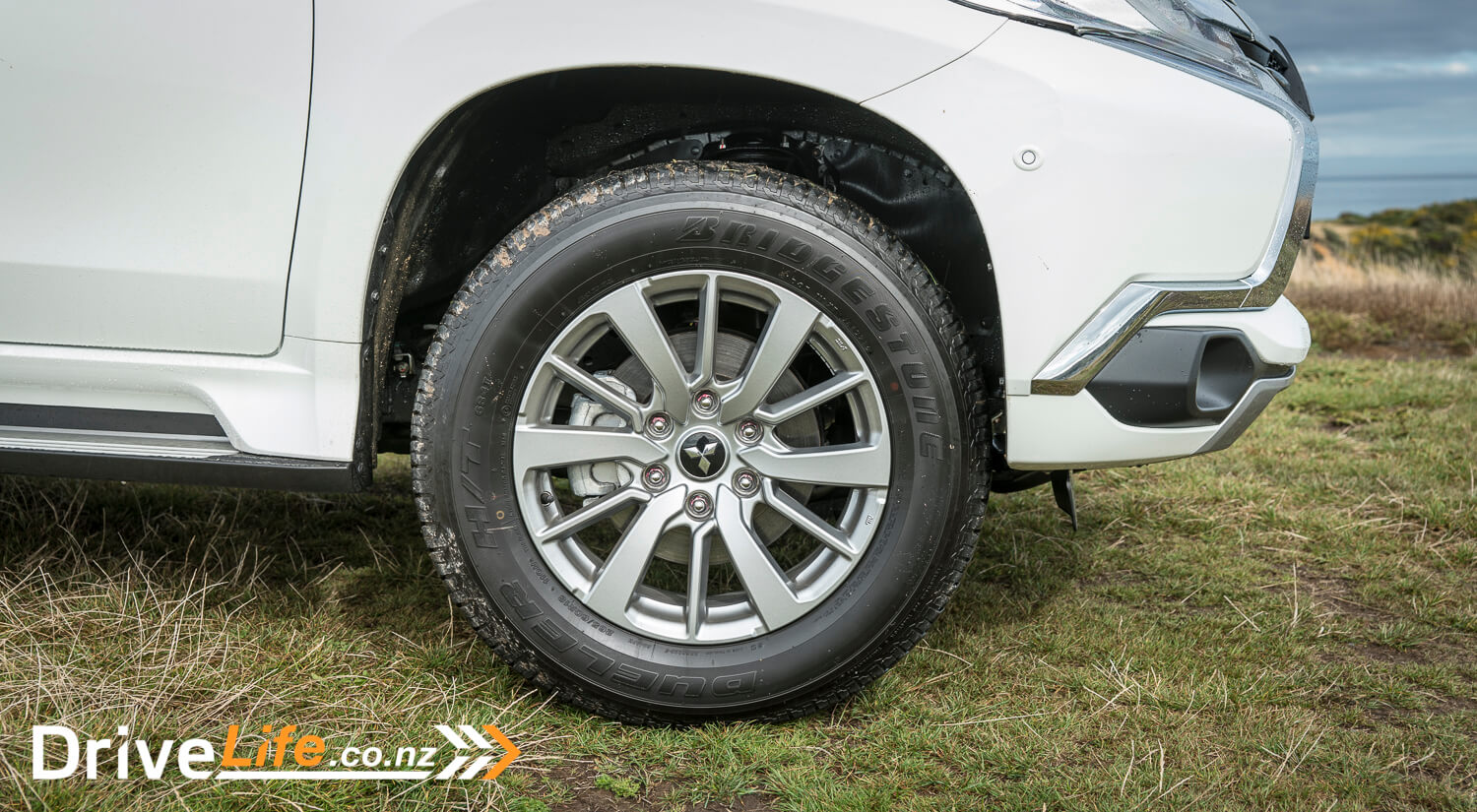


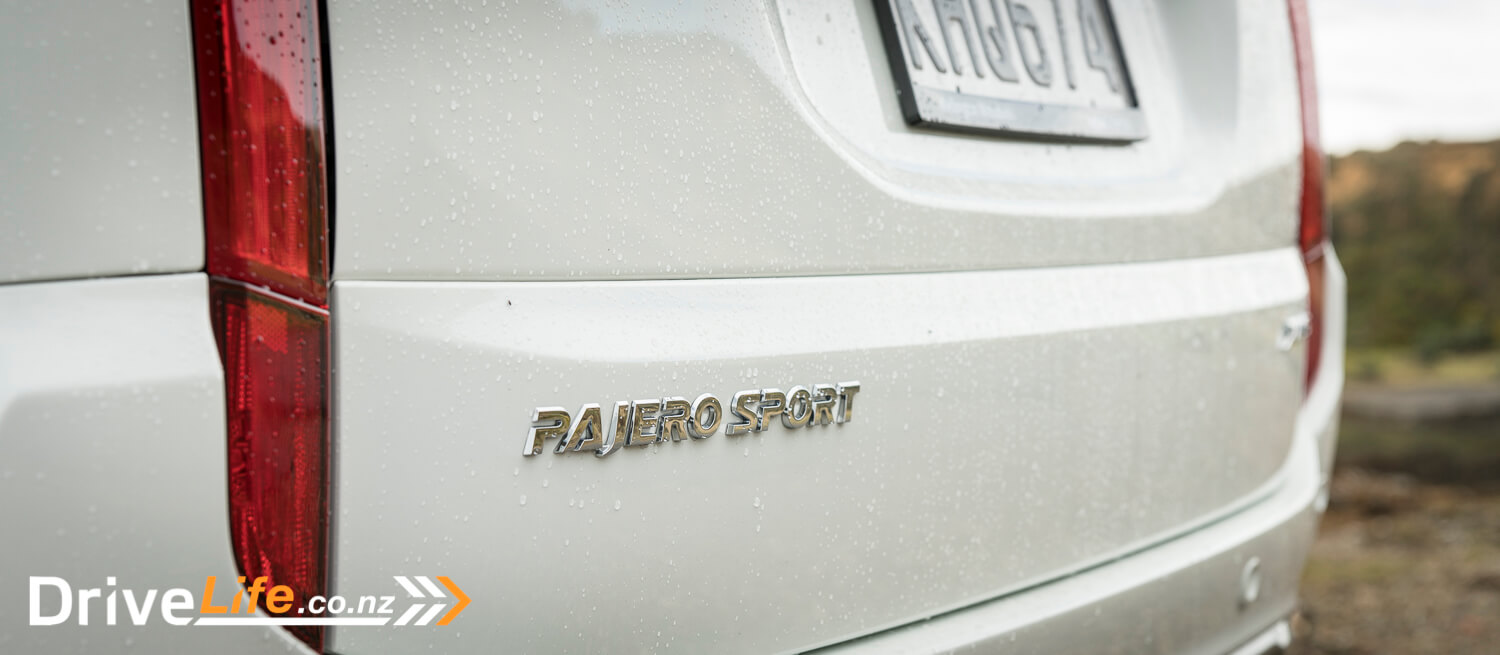
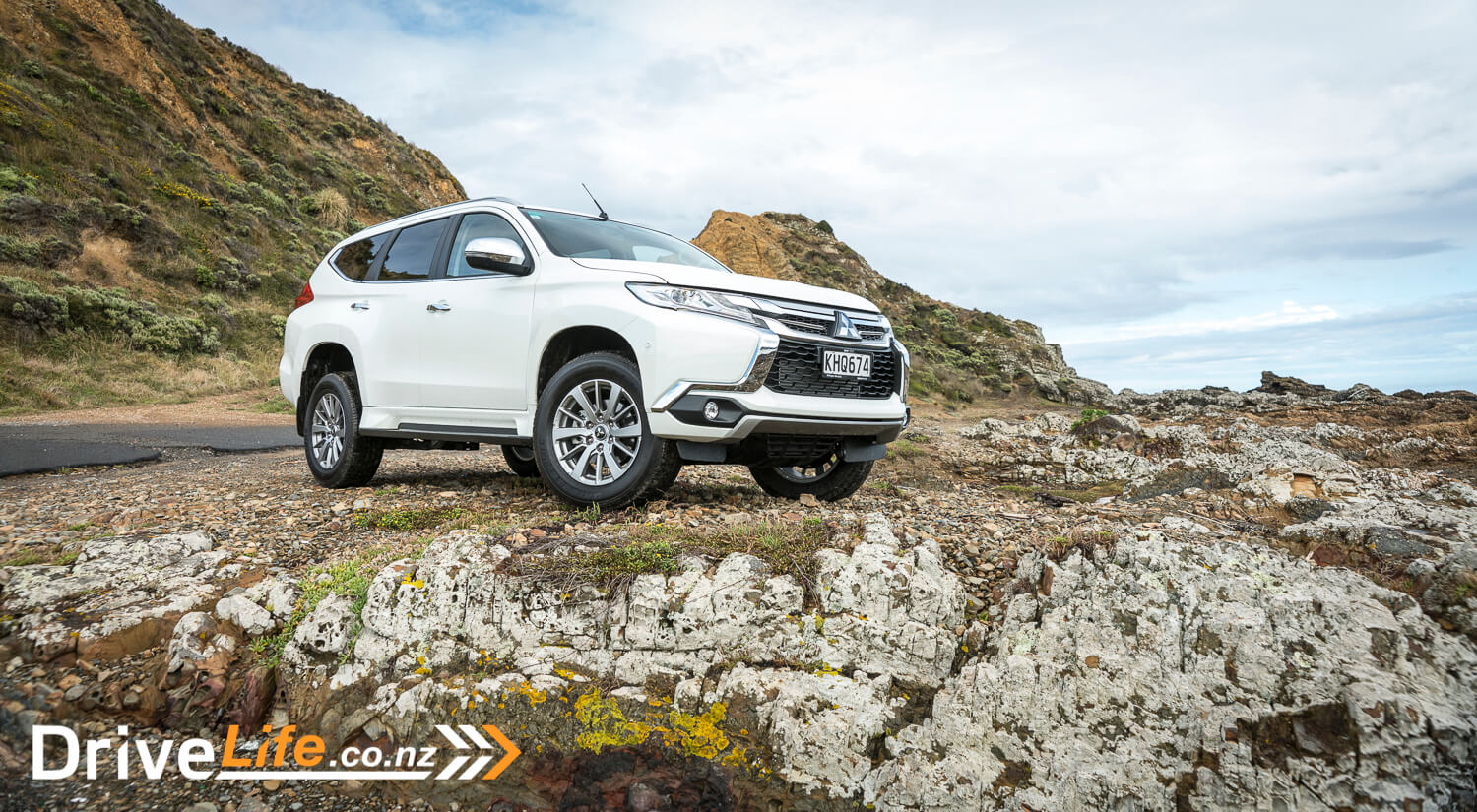












































Is it snow-chains -friendly, preferably both ends? i.e is there reasonable clearance between tyres and suspension components?
Hi Gary, From what we could see it had a lot of room at the rear and a decent amount at the front. We did not check it for the specific use with chains, but will keep that in mind for future reviews. Thanks
Hi there.is new pajero sports 2020 come with floor mats.thanks.ram.
The 2016 VRX Pajero Sport is an exercise in frustration to own. I have one. I do not recommend them if you’re thinking about it – at least not yet. They certainly have a lot of potential, but the clowns that designed them just got too much wrong for this to be a complete package.
1. No rear diff lock. Whoever signed off on the VRX model rather than the Exceed model needs to lose their job. My 2010 Challenger Exceed (with rear locker) is more capable off road than the 2016 VRX.
2. Lack of storage space. Again, my Challenger Exceed had a lot of pockets/trays/little storage areas for things like keys/pens/mints/change/garage remotes etc. that the VRX simply doesn’t have.
3. Hand holding. This seriously makes me want to punch the designer(s). I can’t fart without the car yelling at me for one thing or another. If I hop out of the vehicle while it’s running and close the door because it’s raining, an external alarm sounds. It’s keyless entry – it’s not like I can lock my keys inside! If I remove a seatbelt to crawl up the drive way – bitchin betty has a go at me for that. Even if you put the vehicle in park and/or get out of the vehicle, the not wearing a seatbelt alarm continues to sound. Why? WHY?
3. Dangerous “safety” features. FCM is dangerous. Several times it has slammed on the brakes without warning (at open road speeds), throwing traffic behind me into chaos. In particular, NZ roads can have a gentle left hand curve away with a straight ahead lane for right turning. Approaching this, the FCM detects the right turning vehicle ahead and throws on the anchors even though you’re about to peel off left of them. Absolutely bloody dangerous!
4. Sonar is random. It ghosts frequently. Stopped at light – it’ll sometimes (not always) start pinging away even though there is nothing anywhere close to you.
5. FCM system means you cannot fit a bar to the front. This also means no winch and no light bars. Who the hell releases a “capable offroader” without the capacity to fit a bar on the nose? MMNZ, that’s who.
The list goes on – but you get the idea.
Dear MMNZ – from a PS VRX owner. You’re close to a great vehicle, but not quite there. Please fix the following;
1. All models to have factory rear diff lock. Period. No exception.
2. Storage. More please. The little nooks and crannies for everyday, real life bits n pieces.
3. Develop a factory front bar assembly capable of mounting a winch and light bars – and have it work on ALL models you sell. While you’re at it, supply real body plates rather than having to “modify” Triton plates, and make them strong, not out of tinfoil.
4. Gag bitchin Betty. I don’t need my damned hand held.
5. Tweak FCM to be less aggressive. Currently it’s all or nothing. Make auto-braking more progressive, a softer application over time, not suddenly slamming on the anchors out of nowhere.
6. FFS add default maps. iPhone is fine in the city, but when you go off to play or explore the back country, you often don’t have a signal, and when you need to know where you are, the bloody thing doesn’t work. Think about it.
7. Where is the online info about the NZ model VRX? EVERYTHING out there is about the Aussie Exceed model, which the VRX definitely is not (but should be!).
Get this sorted, and you’re on to a winner. I’d buy another one if these things were fixed. Until then, I am telling everyone that asks not to bother – from the perspective of an owner of both a 2010 Exceed Challenger and a 2016 Pajero Sport VRX.